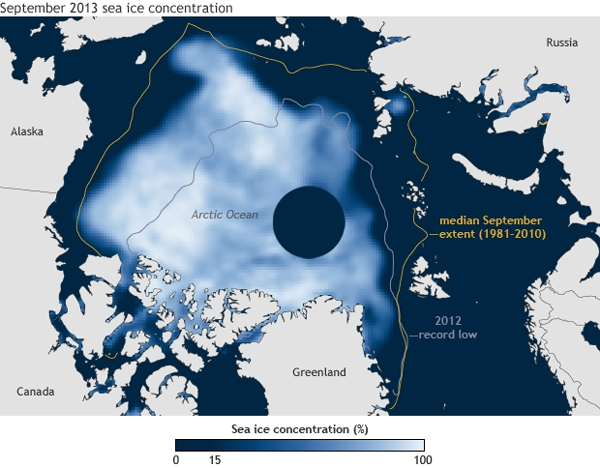
A federal agency says the Arctic continued to warm in 2013 and may have entered a “new normal” of diminished sea ice and wilder swings in weather that affect lower latitudes.
It’s not proven, but the evidence is growing, the report’s chief author said, that a warming Arctic is making the jet stream waver more and delivering more erratic weather patterns to the Lower 48 states, Europe and Russia.
Martin Jeffries of the University of Alaska Fairbanks says more and more research papers are establishing specific links between that weather and a warmer Arctic Ocean.
“It’s believed to be causing in the wintertime colder snowier winters on the eastern seaboard,” Jeffries said. “There is evidence that recent summers in the UK, which have been very wet and have affected farmers are due to the changes in the Arctic as well.”
Or, as University of Virginia Professor Howard Epstein more succinctly put it, “The Arctic is not like Vegas. What happens in the Arctic doesn’t stay in the Arctic.”
But the weather swings involved cooling as well as warming. In Fairbanks, for instance there was an unprecedented record run of 36 days when the temperature was above 80 degrees. But in the same year, Jeffries noted, there was a prolonged spring cold spell.
“In central Alaska, spring 2013 experienced the coldest April in 90 years,” Jeffries said. “And the first green shoots on trees, they appeared very late, on the 26th of May, the latest since records began in 1972.”
Yet the report card also notes that alder shrubs in Siberia have added a whopping 25 percent to their range, and more shrubs and dry conditions have made large wildfires in the Arctic tundra so widespread that they are affecting the atmosphere – putting out so much smoke that Howard Epstein speculates it could be reversing the decreased emissions from Russia since 1989.
“Since the early 1990’s black carbon in the Arctic atmosphere has decreased by roughly 50 percent due to economic collapse in the former Soviet Union,” Epstein said. “Given the increase in arctic wildfires, it seems reasonable to ask how much might that increase offset the decrease of black carbon from other sources.”
But they don’t really know, because the Russians don’t have good satellite coverage and American satellite capacity is eroding as well.
This decline in remote sensing capacity is also one of the reasons nobody knows what the consequences are of an estimated 25 percent increase since the 1970’s of the amount of heat and fresh water that ends up in the Beaufort Gyre to the northwest of Alaska.
So the report card for 2013 is mixed.
Lead author Martin Jeffries says scientists are now studying a moving target when it comes to the effects of a warming Arctic.
“And multiple observations provide strong evidence of widespread sustained changes that are driving the arctic environmental system into a new state,” Jeffries said. “Some would say that this has already happened – that the Arctic has shifted to a new normal.”
The Arctic Report Card is the work of 147 scientists from 14 countries and is now available on NOAA’s website.
sheimel (at) alaskapublic (dot) org | 907.550.8454 | About Steve




